In the rapidly evolving world of electric vehicles (EVs), the Kia EV3 and Hyundai Inster are two compelling SUV contenders that deserve a close examination. Both brands, known for their innovative designs and technologies, have produced models that reflect the future of sustainable mobility. In this comparison, we will delve into the technical aspects and distinctive innovations of these two electric vehicles.
Kia EV3 vs Hyundai Inster – Który model sprawdza się lepiej na co dzień?
Dwa auta, jedno starcie: Kia EV3 kontra Hyundai Inster.
Które wypada lepiej pod względem osiągów, zużycia i relacji ceny do jakości? Sprawdź teraz!
Performance Overview
The Kia EV3 boasts impressive performance metrics with a maximum power output of 204 HP (150 kW) and a torque of 283 Nm. This SUV can accelerate from 0 to 100 km/h in just 7.5 seconds, showcasing its sporty character. In contrast, the Hyundai Inster, with its power options ranging from 97 HP to 115 HP (71 to 85 kW) and a torque of 147 Nm, takes a more gradual approach to acceleration, clocking in at 10.6 to 11.7 seconds.
Battery and Range
Battery capacity is a critical factor in the EV landscape, and here the Kia EV3 offers an impressive choice between 58.3 kWh and 81.4 kWh options, leading to an electric range of up to 605 km. This makes it a feasible option for long-distance travel. The Hyundai Inster, however, has smaller battery options of 42 kWh and 49 kWh, delivering a range of approximately 327 to 370 km. While these figures may be sufficient for city driving, they do fall short compared to the EV3's capabilities.
Charging Efficiency and Energy Consumption
When considering energy efficiency, the Kia EV3 consumes between 14.9 and 16.2 kWh per 100 km, showcasing a competitive edge in energy conservation. The Hyundai Inster records a slightly better range of 14.3 to 15.1 kWh per 100 km, indicating optimized consumption, which is beneficial for daily commutes. Both vehicles present an environmentally friendly option, boasting a CO₂ efficiency class rating of A with zero tailpipe emissions.
Interior Space and Comfort
Concerning seating capacity and interior space, the Kia EV3 excels with ample room for up to five passengers and a trunk capacity of 460 liters. This spacious design is ideal for families and anyone needing extra storage. Conversely, the Hyundai Inster accommodates four passengers with a more modest trunk capacity of 280 to 238 liters, making it less suitable for larger groups or extensive cargo.
Dimensions and Handling
Dimensionally, the Kia EV3 measures 4300 mm in length and 1850 mm in width, compared to the Hyundai Inster, which is more compact at 3825 mm in length and 1610 mm in width. This gives the EV3 a more substantial road presence and stability, while the smaller dimensions of the Inster might appeal to urban drivers seeking easy maneuverability in tight spaces.
Innovative Features and Technology
Both manufacturers are committed to providing a robust suite of technology and features. The Kia EV3 is expected to incorporate Kia's latest infotainment system, offering seamless smartphone integration, advanced safety features, and driver assistance systems. The Hyundai Inster also includes a range of smart tech options, though its offerings may be not as expansive as those likely featured in the EV3.
Conclusion: Which SUV Reigns Supreme?
Ultimately, the choice between the Kia EV3 and the Hyundai Inster depends on your specific needs. The EV3 offers superior performance, range, and interior space, making it an excellent choice for families and long-distance travelers. On the other hand, the Inster may cater to urbanites looking for a compact and efficient vehicle for city commutes. Regardless of your preference, both models signify the exciting future of sustainable mobility in the automotive industry.
Szczegóły techniczne: konkretne różnice między modelami
Koszty i zużycie
Cena i efektywność to kluczowe czynniki przy zakupie auta – właśnie tu często widać największe kontrasty.
Hyundai Inster ma decydowany przewagę cenową – jego cena zaczyna się od 105000 zł, podczas gdy Kia EV3 kosztuje 158100 zł. Różnica wynosi około 53109 zł.
Pod względem zużycia energii przewagę ma Hyundai Inster: z wynikiem 14.30 kWh na 100 km jest ledwo zauważalny bardziej wydajny niż Kia EV3, który zużywa 14.90 kWh. Różnica to około 0.60 kWh.
Pod względem zasięgu Kia EV3 wypada oczywisty lepiej: osiąga do 605 km, czyli około 235 km więcej niż Hyundai Inster.
Silnik i osiągi
Pod maską widać, który model jest bardziej sportowy i kto ma lepszy start.
Pod względem mocy silnika Kia EV3 ma decydowany przewagę – 204 KM zamiast 115 KM. To różnica około 89 KM KM.
W przyspieszeniu 0–100 km/h Kia EV3 jest decydowany szybszy – 7.50 s wobec 10.60 s. Różnica wynosi około 3.10 s sekundy.
Pod względem prędkości maksymalnej Kia EV3 jest nieco lepszy – osiąga 170 km/h, podczas gdy Hyundai Inster kończy na 150 km/h. Różnica to około 20 km/h.
Różnica widoczna jest również w momencie obrotowym: Kia EV3 ciągnie decydowany mocniej – 283 Nm wobec 147 Nm. Różnica to około 136 Nm.
Przestrzeń i praktyczność
Poza mocą liczy się też wygoda i funkcjonalność. Tu decyduje się, który samochód jest bardziej praktyczny i wszechstronny.
Miejsca siedzące: Kia EV3 oferuje trochę więcej miejsc – 5 vs 4.
Pod względem masy własnej Hyundai Inster jest wyraźny lżejszy – 1380 kg wobec 1800 kg. Różnica to około 420 kg kg.
Pod względem pojemności bagażnika Kia EV3 oferuje oczywisty więcej miejsca – 460 L wobec 280 L. To różnica około 180 L litrów.
W maksymalnej pojemności ładunkowej Kia EV3 wypada w niewielkim stopniu lepiej – do 1251 L, czyli o około 192 L więcej niż Hyundai Inster.
Pod względem ładowności Kia EV3 wypada czytelny lepiej – 470 kg wobec 357 kg. Różnica to około 113 kg kg.
Kto zostaje zwycięzcą?
Podsumowując, Kia EV3 jest przewyższa w niemal każdym aspekcie i zasługuje na tytuł DriveDuel Champion.
Oferuje lepszy, bardziej zrównoważony pakiet i jest praktyczniejszym towarzyszem na co dzień.
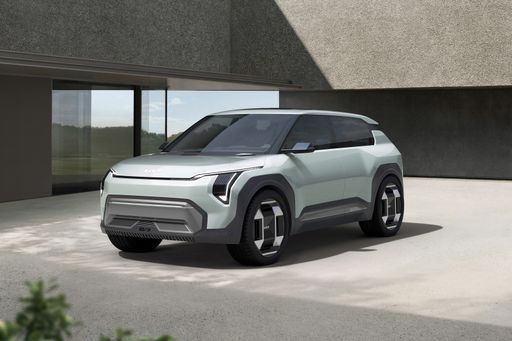 @ Kia Corporation
@ Kia Corporation
Kia EV3
Kia EV3
Kia EV3 to świeże, miejskie auto elektryczne, które łączy praktyczność z odrobiną stylu i prostotą obsługi, idealne do codziennych wyzwań. Dla kupujących to rozsądna propozycja — przyjazne wnętrze i przewidywalne zachowanie na drodze sprawiają, że poranna rutyna za kierownicą staje się mniej stresująca i nawet miła, bez konieczności studiowania instrukcji obsługi przez cały weekend.
szczegóły @ Kia Corporation
@ Kia Corporation
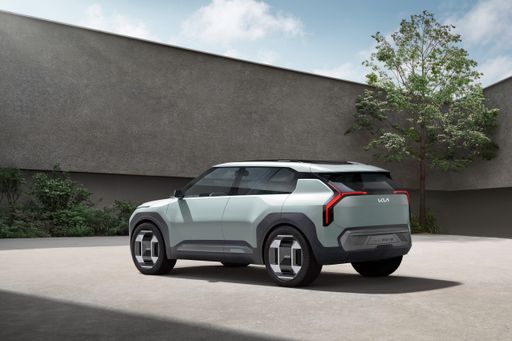 @ Kia Corporation
@ Kia Corporation
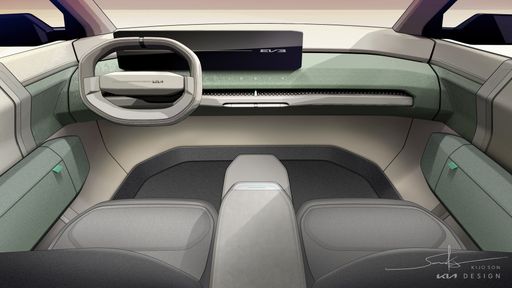 @ Kia Corporation
@ Kia Corporation
Hyundai Inster
Hyundai Inster to samochód, który zaskakuje świeżym stylem i praktycznym podejściem do codziennej mobilności. Dobrze zestrojone zawieszenie i przestronne wnętrze sprawiają, że to pewny wybór dla tych, którzy chcą komfortu bez przepłacania.
szczegóły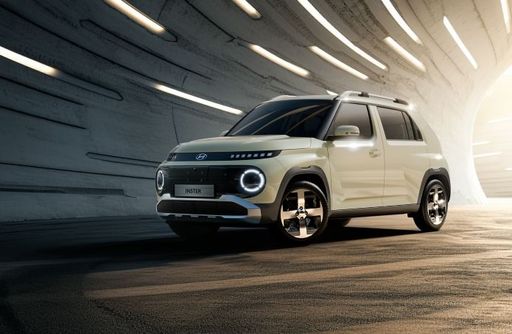 @ Hyundai Motor Company
@ Hyundai Motor Company
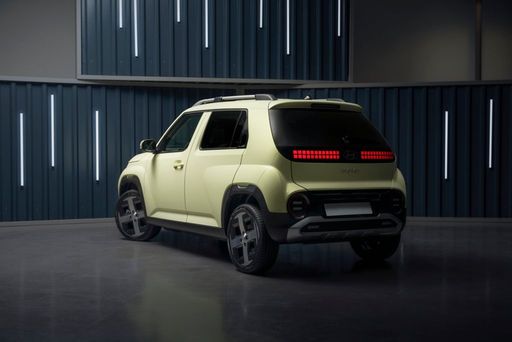 @ Hyundai Motor Company
@ Hyundai Motor Company
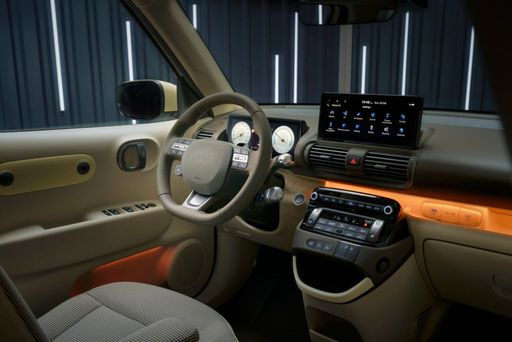 @ Hyundai Motor Company
@ Hyundai Motor Company
 @ Kia Corporation
@ Kia Corporation
|
 @ Hyundai Motor Company
@ Hyundai Motor Company
|
|
|
|
Koszty i Zużycie |
|
|---|---|
|
Cena
158100 - 213900 zł
|
Cena
105000 - 132200 zł
|
|
Zużycie L/100km
-
|
Zużycie L/100km
-
|
|
Zużycie kWh/100km
14.9 - 16.2 kWh
|
Zużycie kWh/100km
14.3 - 15.1 kWh
|
|
Zasięg elektryczny
436 - 605 km
|
Zasięg elektryczny
327 - 370 km
|
|
Pojemność baterii
58.3 - 81.4 kWh
|
Pojemność baterii
42 - 49 kWh
|
|
CO2
0 g/km
|
CO2
0 g/km
|
|
Pojemność zbiornika paliwa
-
|
Pojemność zbiornika paliwa
-
|
Wymiary i Nadwozie |
|
|---|---|
|
Typ nadwozia
SUV
|
Typ nadwozia
SUV
|
|
Miejsca siedzące
5
|
Miejsca siedzące
4
|
|
Drzwi
5
|
Drzwi
5
|
|
Masa własna
1800 - 1885 kg
|
Masa własna
1380 - 1433 kg
|
|
Pojemność bagażnika
460 L
|
Pojemność bagażnika
238 - 280 L
|
|
Długość
4300 - 4310 mm
|
Długość
3825 - 3845 mm
|
|
Szerokość
1850 mm
|
Szerokość
1610 mm
|
|
Wysokość
1560 - 1570 mm
|
Wysokość
1575 - 1610 mm
|
|
Maksymalna pojemność bagażnika
1251 L
|
Maksymalna pojemność bagażnika
1059 L
|
|
Ładowność
470 kg
|
Ładowność
317 - 357 kg
|
Silnik i Wydajność |
|
|---|---|
|
Typ silnika
Elektryczny
|
Typ silnika
Elektryczny
|
|
Skrzynia biegów
Automatyczna
|
Skrzynia biegów
Automatyczna
|
|
Szczegóły skrzyni biegów
Reduktor
|
Szczegóły skrzyni biegów
Reduktor
|
|
Rodzaj napędu
Napęd na przednie koła
|
Rodzaj napędu
Napęd na przednie koła
|
|
Moc KM
204 KM
|
Moc KM
97 - 115 KM
|
|
Przyspieszenie 0-100km/h
7.5 - 7.9 s
|
Przyspieszenie 0-100km/h
10.6 - 11.7 s
|
|
Maksymalna prędkość
170 km/h
|
Maksymalna prędkość
140 - 150 km/h
|
|
Moment obrotowy
283 Nm
|
Moment obrotowy
147 Nm
|
|
Liczba cylindrów
-
|
Liczba cylindrów
-
|
|
Moc kW
150 kW
|
Moc kW
71 - 85 kW
|
|
Pojemność silnika
-
|
Pojemność silnika
-
|
Ogólne |
|
|---|---|
|
Rok modelowy
2024
|
Rok modelowy
2025
|
|
Klasa efektywności CO2
A
|
Klasa efektywności CO2
A
|
|
Marka
Kia
|
Marka
Hyundai
|
Jakie rodzaje napędu ma Kia EV3?
Model oferowany jest z napędem Napęd na przednie koła.
Wyświetlane ceny i dane są szacunkowe, oparte na niemieckich cenach katalogowych i mogą się różnić w zależności od kraju. Te informacje nie stanowią wiążącej oferty.
